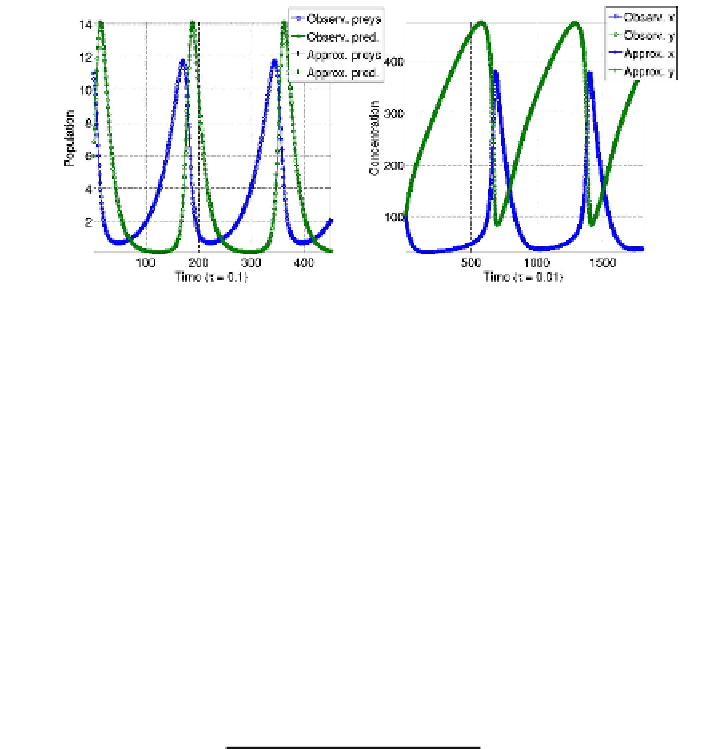Information Technology Reference
In-Depth Information
Fig. 3.4
On the left: observed prey and predator populations with
x
[
]=
11 and
y
[
]=
6. The
approximated values are plotted against the ones calculated by the differential model given
in Eq. (3.12) with
A
=
0
0
0
.
3,
B
=
0
.
1,
C
=
0
.
18 and
D
=
0
.
7. On the right: the Brusselator
dynamics with
x
[
0
]=
y
[
0
]=
100.
We can further simplify these reactions by focusing on substances
x
,
y
, and by con-
sidering
a
,
b
,
d
,
e
as input/output substances providing the insertion or expulsion of
x
y
from/to the environment. Table 3.9 is an MP grammar of BZ reaction. In fact,
its MP dynamics given on the right of Fig. 3.4 exhibits the classical form of Pri-
gogine's Brusselator differential model. In this form a strict analogy of BZ with
Lotka-Volterra dynamics can be envisaged, with the difference that a kind of
y
-to-
x
transformation and of
x
-to-
y
transformation is realized here by rules
r
2
and
r
3
respectively.
,
Ta b l e 3 . 9
MP grammar of Brusselator dynamics
Reactions
Regulators
r
1
:0
→
x
ϕ
1
=
1
ϕ
2
=
10
−
6
x
2
y
r
2
:2
x
+
y
→
3
x
r
3
:
x
→
y
ϕ
3
=
0
.
03
x
r
4
:
x
→
0
ϕ
4
=
0
.
01
x
3.2
Time Series and Inverse Dynamics
Dynamical system is a pervasive concept in mathematics and in all sciences. A real
number, seen as a process of generation of digits is a particular case of dynam-
ical system. Analogously, a computation which starts from some initial data and
transforms them along some elaboration steps determines a dynamical system. We
find other examples of dynamical systems in a planet moving around a star, in the





